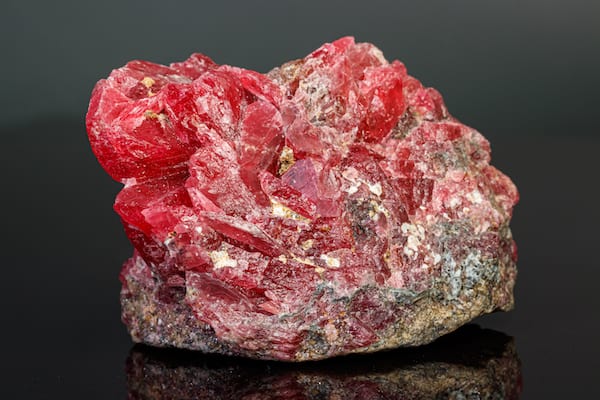Mad Hatter – “Why is a RAVEN like a writing desk? Have you guessed the riddle yet?”
Alice – “No, I give it up. What’s the answer?”
Mad Hatter – “I haven’t the slightest idea.”
We might NEVAR know. (1)
Let’s get the dry details out of the way so we can get to the good stuff. Mercury (Hg for the Greek hydrargyrumwhich means liquid silver) is a slippery silvery substance with an atomic number of 80. It’s also liquid at room temperature (quicksilver), and I remember a kid in grade school bringing some Hg in a glass vial and pouring a few drops into my palm while we were waiting for the bus.

Hg expands and contracts with changes in temperature, so it was once used in Hg thermometers. It also has great conductivity and was used in Hg tilt switches (2) for stuff like those old-fashioned ding-dong doorbells (3), the hood lights and brakes in 2002 and older models cars (4)—or as a tilt fuse in bombs (5). Fun fact: The brilliant red paint of murals in Pompeii and on tombs in ancient Egypt came from a material called cinnabar—HgS—that was mined from the earth and ground into a fine powder. Cinnabar is also found in Mayan murals and used historically by the Chinese as a red lacquer for furniture (6, 7, 8).

So why isn’t Hg used much anymore? Because, if heated and volatilized or turned into Hg-salts and absorbed through tissues, it is incredibly toxic, especially neurologically.
Which brings me to hats
We’ve all used felt at one time or other, probably in some arts or craft class, even as far back as elementary school or day care. I would describe modern felt as colorfully dyed squares of matted, condensed, and pressed—not woven or knitted—fabric. Most colorful felt found in craft stores is made with acrylic of other synthetic fabrics, but classically, animal fur and sheep wool were used and are still used (9). “They say” archeological evidence has been found that dates felt fabric back to 6500 B.C. at Catal Hüyük in Turkey, but I can’t find a peer-reviewed reference. Every place I clicked seemed to be endlessly repeating someone else’s blog post dates. It’s almost as bad as “experts say”.

Felt works as a waterproof, wind-proof, flame-retardant, cold-proof insulator fabric because of the keratin scales on fur and hair. Before treatment, the keratin scales (cuticle) lay flat and smooth on the hair shaft and help keep hair and fur from matting together (11). To successfully felt fur, the keratin scales need to be roughed up (12) so they stuck out like spines, allowing the hair to catch and bond with other fur follicles. For centuries, this meant that felt makers soaked and heated the fur in urine (blech) which chemically sped up the felting process (20) by lowering the pH. Adding urine to the mix made superior felt. Then 17th century French hat makers figured out that just using heat and urine didn’t work as efficiently as heat and urine from workers who were ingesting mercury salts as a treatment for syphilis (13)(Urine and syphilis. Never wearing felt hats again). Remember, Hg was once thought to be a cure for syphilis (14—who’s seen Out of Africa? (1985)).

So felt factories dropped urine as a felting treatment, and instead, workers in hat factories used big, heated vats of Hg(NO3)2 (mercuric nitrate), a process called carroting because the treatment turned the felt orange. But the poor workers ended up breathing in toxic mercury vapors. Over time, felt workers suffered from tremors, drooling, hair loss, numbness, personality changes, memory loss, muscle weakness, nausea and vomiting, and irreversible neurological damage (15). In 1934, the U.S. Public Health service estimated that ~80% of felt workers had mercurial tremors. There was even a name for this Hg disease: erethism (18) or Mad Hatter syndrome. The use of Hg in felting was stopped in the early 1940s (16) but not because the hatters’ unions lobbied for it. Nope. Mercury was needed for the war effort (17).
You can still buy animal fur or wool felt hats today because the felting process is safe. And to make your purchase super festive, be sure you get your hat on September 15th, which is—I kid you not—National Felt Hat Day (19).
- https://www.writerswrite.com/why-raven-like-writing-desk-121520171
- https://en.wikipedia.org/wiki/Mercury_switch
- https://makezine.com/article/technology/mercury-switch-doorbell/
- https://www.youtube.com/watch?v=8imnoA0ocy4
- https://en.wikipedia.org/wiki/Tilt_fuze
- https://geology.com/minerals/cinnabar.shtml
- https://mymodernmet.com/shades-of-red-color-history/
- https://geologyscience.com/minerals/cinnabar/
- https://www.baronhats.com/pages/hat-making-materials
- https://sewport.com/fabrics-directory/felt-fabric
- https://www.philipkingsley.com/hair-guide/hair-science/the-hair-structure.html
- https://tricksyknitter.com/blogs/learn-to-knit/why-wool-felts-and-how-to-felt-your-knitting-on-purpose
- https://www.famsf.org/stories/poisons-part-i-the-mercurial-world-of-felt
- https://jmvh.org/article/syphilis-its-early-history-and-treatment-until-penicillin-and-the-debate-on-its-origins/
- https://www.medicalnewstoday.com/articles/320563#complications
- https://opencommons.uconn.edu/cgi/viewcontent.cgi?article=1023&context=wracklines
- Erethism
- https://www.sciencedirect.com/topics/biochemistry-genetics-and-molecular-biology/erethism
- https://www.holidayinsights.com/moreholidays/september/felthatday.htm



 Gallium, Good Death, and the Periodic Table of DEATH and Mystery
Gallium, Good Death, and the Periodic Table of DEATH and Mystery
Leave a Reply